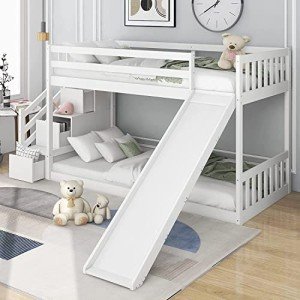Understanding Slide Beds: A Comprehensive Overview
Intro
Slide beds represent an advanced improvement in the field of transportation and logistics, especially in the context of the trucking market. These specialized beds use boosted packing and discharging capabilities, increased effectiveness, and better security standards. As the need for logistics solutions ends up being more sophisticated, slide beds become a crucial tool for business seeking to enhance their operations. This article explores the different aspects of slide beds, including their design, benefits, types, and upkeep considerations.
What is a Slide Bed?
A slide bed, frequently described as a moving truck bed or slide-out bed, is a kind of truck bed designed to extend and pull back, enabling simpler access to cargo. These beds can slide out either manually or through automated systems, facilitating loading and discharging while reducing the pressure on employees.
How Do Slide Beds Work?
The performance of slide beds can differ based upon their style:
- Manual Slide Beds: These beds need several people to pull or press the bed out. While basic and cost-effective, manual slide beds might not appropriate for heavy-duty applications.
- Automated Slide Beds: These beds operate through hydraulic or electric systems that allow for effortless extension and retraction at the push of a button. Automated systems often feature security functions to avoid accidents throughout operation.
The standard operation of these systems can be summarized in the following table:
| Type | System | Usage | Pros | Cons |
|---|---|---|---|---|
| Manual Slide Beds | Pull/push operation | Light to medium loads | Lower expense | Requires physical labor |
| Automated Slide Beds | Hydraulic/Electric | Heavy loads and frequent usage | Convenience and effectiveness | Greater preliminary financial investment |
Benefits of Using Slide Beds
Slide beds offer numerous advantages that make them an attractive option for organizations in different sectors. These benefits can be classified into functional effectiveness, safety, and cost-effectiveness:
Operational Efficiency
- Easy Access: Slide beds enable employees to reach cargo without having to climb up into the truck or maneuver around tight spaces.
- Time-Saving: Quick filling and dumping mean lowered turn-around times for lorries, resulting in increased productivity.
- Better Space Utilization: The capability to extend the bed indicates that cargo can be arranged more effectively, facilitating much better use of space.
Safety
- Reduced Injury Risk: With easy access to freight, the probability of musculoskeletal injuries reduces substantially.
- Improved Stability: Slide beds are developed to accommodate heavier loads more equally, enhancing car stability.
Cost-Effectiveness
- Increased Payload Capacity: Slide beds allow for greater volume transport without making considerable adjustments to vehicles.
- Long-Term Durability: Investing in a quality slide bed can lead to reduced maintenance costs over time.
Kinds Of Slide Beds
There are a number of kinds of slide beds readily available in the market, each accommodating various requirements and applications. Here are the most common types:
- Standard Slide Beds: These are the most prevalent and serve general functions across numerous sectors.
- Heavy-Duty Slide Beds: Designed for bigger cars and much heavier loads, these beds strengthen structural stability.
- Custom Slide Beds: Customized services deal with particular industry needs, such as livestock transport or customized equipment.
Slide Bed Types Comparison
| Type | Suitable Use | Optimum Load Capacity | Customization Options |
|---|---|---|---|
| Standard Slide Beds | General transport | Approximately 3,000 pounds | Minimal |
| Heavy-Duty Slide Beds | Industrial and building and construction | Over 3,000 lbs | Readily available |
| Custom-made Slide Beds | Specialized transport requires | Varies by style | Extremely customizable |
Maintenance Considerations
Keeping a slide bed is essential to ensure its longevity and ideal performance. Here are vital upkeep suggestions:
- Regular Inspections: Routinely inspect for wear and tear, guaranteeing that all moving parts are operating correctly.
- Lubrication: Keep moving elements well-lubricated to reduce friction and prevent corrosion.
- Cleanliness: Regularly clean the slide bed to remove particles and impurities that might disrupt operations.
- Tighten up Fasteners: Periodically guarantee that all bolts and screws are tightened to avoid structural failure.
FAQs About Slide Beds
Q1: Are slide beds ideal for all kinds of trucks?A1: While slide beds can be adapted for a range of truck models, it is important to talk to an expert to make sure compatibility.
Q2: How much weight can a slide bed hold?A2: The weight capability of slide beds differs commonly; basic slide beds typically hold up to 3,000 lbs, while sturdy choices can accommodate much more.
Q3: How often should slide beds be kept?A3: Regular upkeep is essential; assessments should be performed a minimum of every six months, with more frequent checks recommended for heavy-use automobiles.
Q4: Can I customize a slide bed for my specific needs?A4: Yes, numerous makers use customization alternatives to cater to industry-specific requirements.
Conclusion
Slide beds are quickly becoming amongst the most effective options for enhancing logistics operations. With Our Web Page to boost access to cargo and facilitate quicker loading and dumping processes, they exhibit a mixing of innovation and utility that attends to the requirements of modern-day transportation. By selecting the right kind of slide bed and keeping it correctly, organizations can significantly enhance their functional efficiency, safety, and cost-effectiveness. The future looks assuring for slide beds, as they continue to evolve and satisfy the growing demands of the logistics industry.

